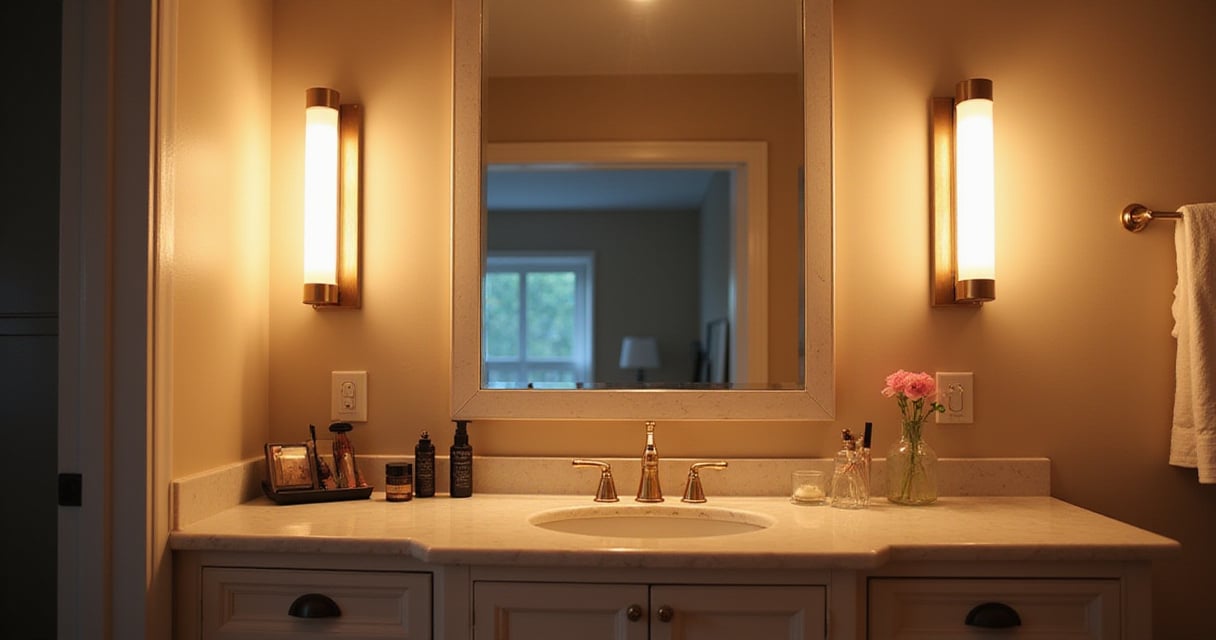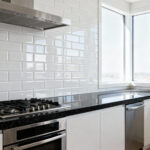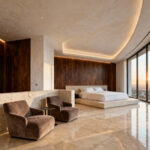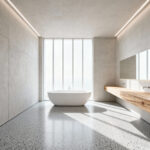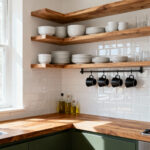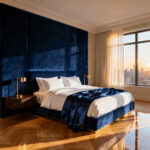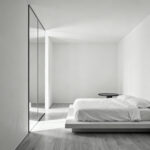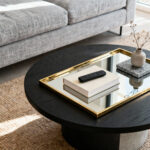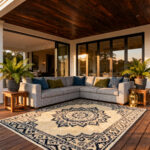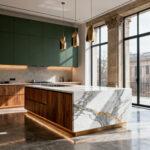Your morning routine deserves better than unflattering shadows and harsh glare. As someone who’s spent years studying how lighting affects both our environment and well-being, I’ve witnessed countless homeowners struggle with inadequate bathroom lighting over mirror that leaves them squinting, straining, and second-guessing their appearance. The truth is, most bathroom lighting fails because it prioritizes basic illumination over the nuanced needs of daily grooming tasks.
The difference between mediocre and exceptional mirror lighting isn’t just about brightness—it’s about creating an environment that supports your daily rituals while minimizing environmental impact. When you understand the interplay between color temperature, fixture placement, and energy efficiency, you transform a functional necessity into a cornerstone of sustainable, comfortable living. The right lighting doesn’t just help you look better; it can reduce energy consumption by up to 75% while supporting your circadian rhythms and overall well-being.
These 24 expert-tested strategies will guide you through every aspect of optimizing your bathroom lighting over mirror, from selecting eco-friendly LED fixtures to positioning them for shadow-free illumination. You’ll discover how sustainable choices often deliver superior performance, learn to troubleshoot common issues, and create a lighting environment that serves both your daily needs and long-term environmental goals.
1. Master Flawless Makeup & Shaving with Proper Lighting
Achieving precision in your daily grooming routine starts with understanding how light quality affects visibility and color accuracy. Poor bathroom lighting over mirror creates shadows that obscure facial contours, making it nearly impossible to apply makeup evenly or achieve a close, safe shave. The key lies in providing consistent, diffused illumination that mimics natural daylight conditions.
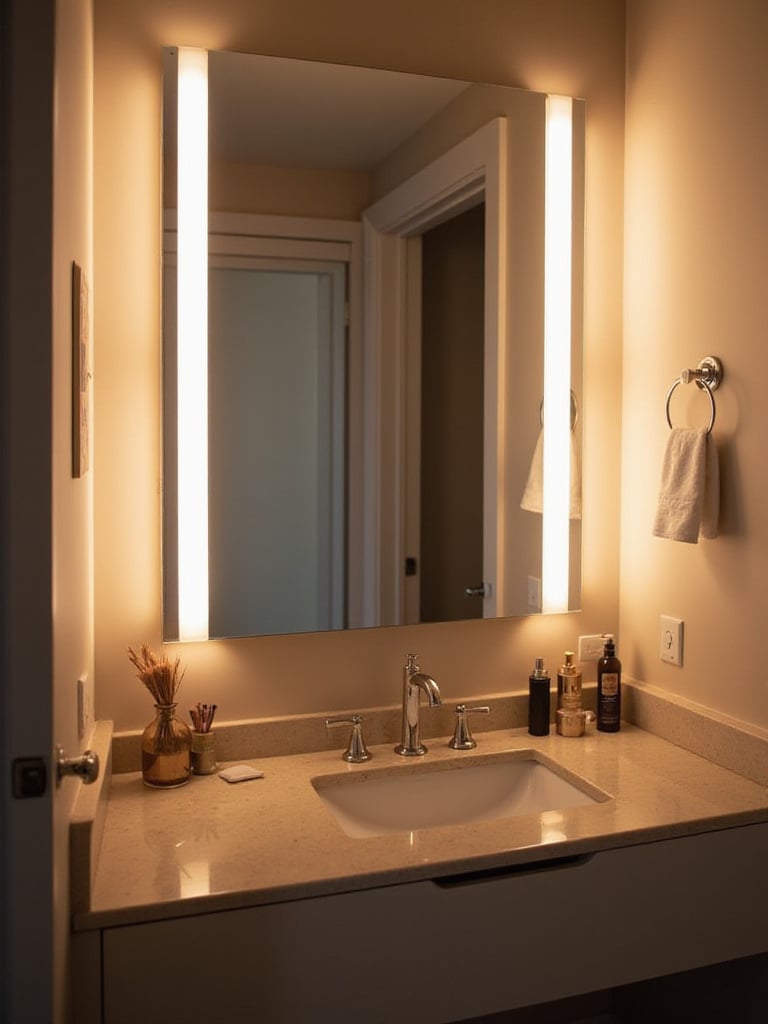
Professional makeup artists consistently emphasize the importance of cross-illumination—light that reaches your face from multiple angles to eliminate harsh shadows. When light comes only from above, it creates unflattering shadows under your eyes, nose, and chin, distorting your perception of how makeup appears. Similarly, inadequate lighting during shaving can lead to missed spots and potential nicks from poor visibility. The solution involves strategic fixture placement combined with high-quality light sources that render colors accurately and provide sufficient brightness for detailed tasks.
The environmental benefits of proper lighting extend beyond personal grooming. Energy-efficient LED fixtures designed for task lighting consume 75% less energy than traditional incandescent bulbs while providing superior light quality. By investing in fixtures with high Color Rendering Index (CRI) ratings—90 or above—you ensure accurate color perception while supporting sustainable lighting practices that reduce both energy consumption and the frequency of bulb replacements.
What makes this choice better for our planet is the longevity of quality LED fixtures, which can operate for 25,000 to 50,000 hours compared to just 1,000 hours for incandescent bulbs.
2. Eliminate Harsh Shadows for a Truly Flattering Reflection
Overhead lighting alone creates the most common problem in bathroom illumination: harsh downward shadows that make grooming tasks difficult and unflattering. These shadows occur because single-source lighting from above casts your facial features into darkness, particularly under the brow line, nose, and chin. The solution requires understanding how light direction affects facial illumination and implementing strategic placement to achieve even coverage.
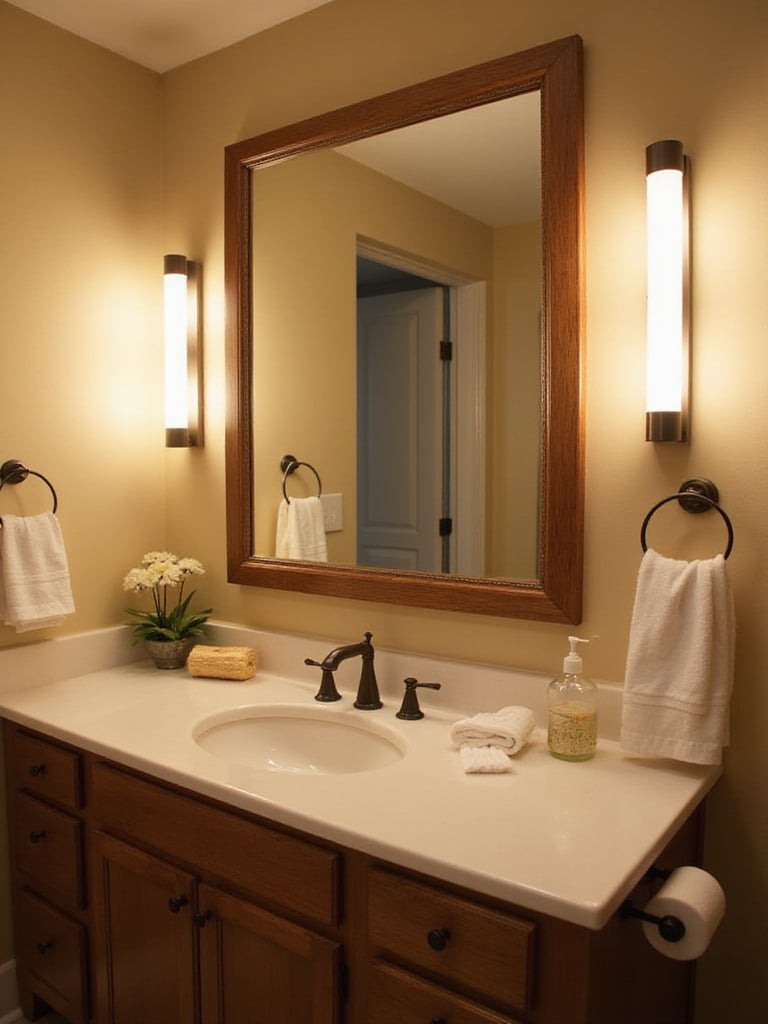
- Side-mounted sconces provide optimal cross-illumination
- Diffused light sources prevent glare and harsh contrasts
- Eye-level positioning ensures light hits your face directly
- Multiple light sources eliminate single-point shadow casting
Beyond the immediate benefits of better grooming visibility, eliminating harsh shadows reduces eye strain and fatigue during extended bathroom use. This is particularly important for individuals who spend significant time on skincare routines or detailed makeup application, where visual comfort directly impacts both safety and results.
The craftsmanship in quality fixtures reveals itself in details like precision-engineered diffusers that distribute light evenly without creating hot spots or glare.
3. Understand Task vs. Ambient Light Needs for Your Vanity
Effective bathroom lighting over mirror requires a layered approach that distinguishes between task lighting for specific activities and ambient lighting for overall room illumination. Task lighting provides focused, bright illumination essential for grooming activities, typically requiring 500-800 lumens at the mirror surface. Ambient lighting creates general room comfort and visual continuity, usually operating at lower intensities of 20-50 lumens per square foot.
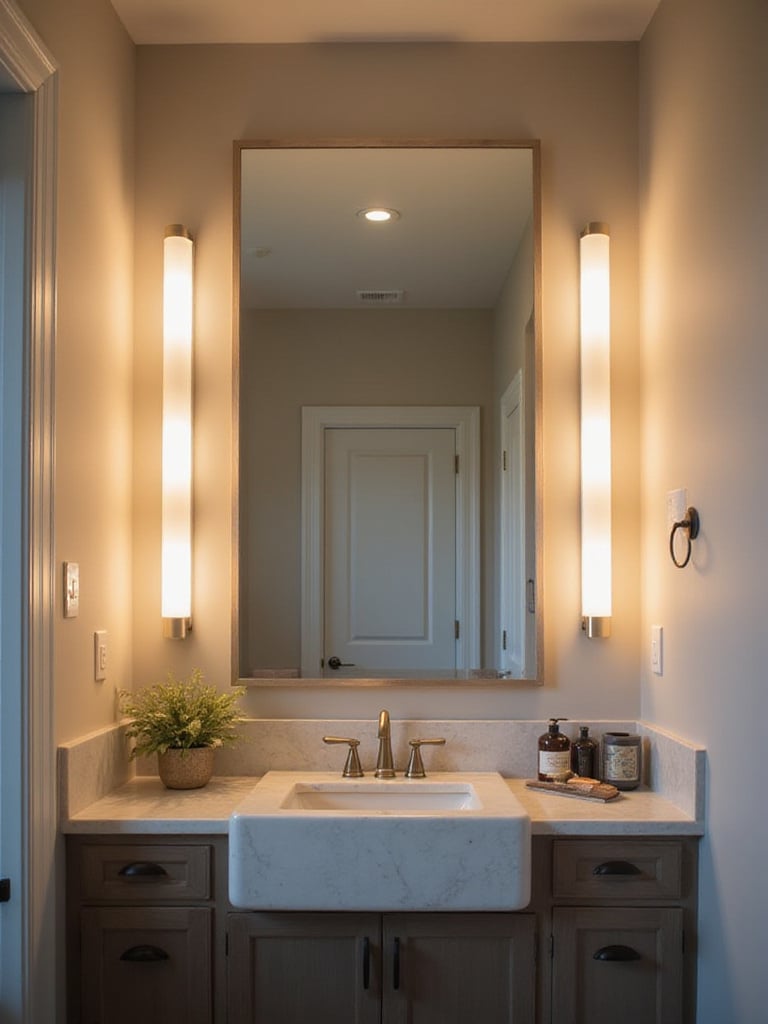
The distinction matters because each type of lighting serves different functions and operates at different intensities throughout the day. Task lighting needs to be bright enough for precision work like applying eyeliner or detailed shaving, while ambient lighting should create a comfortable atmosphere without overwhelming the space. Many sustainable lighting designs incorporate dimming capabilities that allow fixtures to serve both functions, reducing the need for multiple fixture types and minimizing energy consumption.
Understanding this layered approach helps you make more informed decisions about fixture selection and energy usage. Dimmable LED fixtures can provide bright task lighting when needed and soft ambient lighting for relaxation, potentially reducing energy consumption by 40-60% compared to always operating at full brightness. This flexibility also supports circadian health by allowing warmer, dimmer light in the evening and brighter, cooler light for morning routines.
The sustainable journey of this material involves LED technology that adapts to your daily rhythms while minimizing environmental impact through reduced energy consumption.
4. Choose the Optimal Lumens for Bright, Functional Illumination
Lumens measure actual light output, making them more important than wattage when selecting bathroom lighting over mirror fixtures. For effective vanity lighting, aim for 1,500-2,000 total lumens distributed across your lighting setup, with individual fixtures providing 500-800 lumens each when using multiple sources. This ensures adequate brightness for detailed grooming tasks while avoiding the harsh glare that can result from excessive illumination.
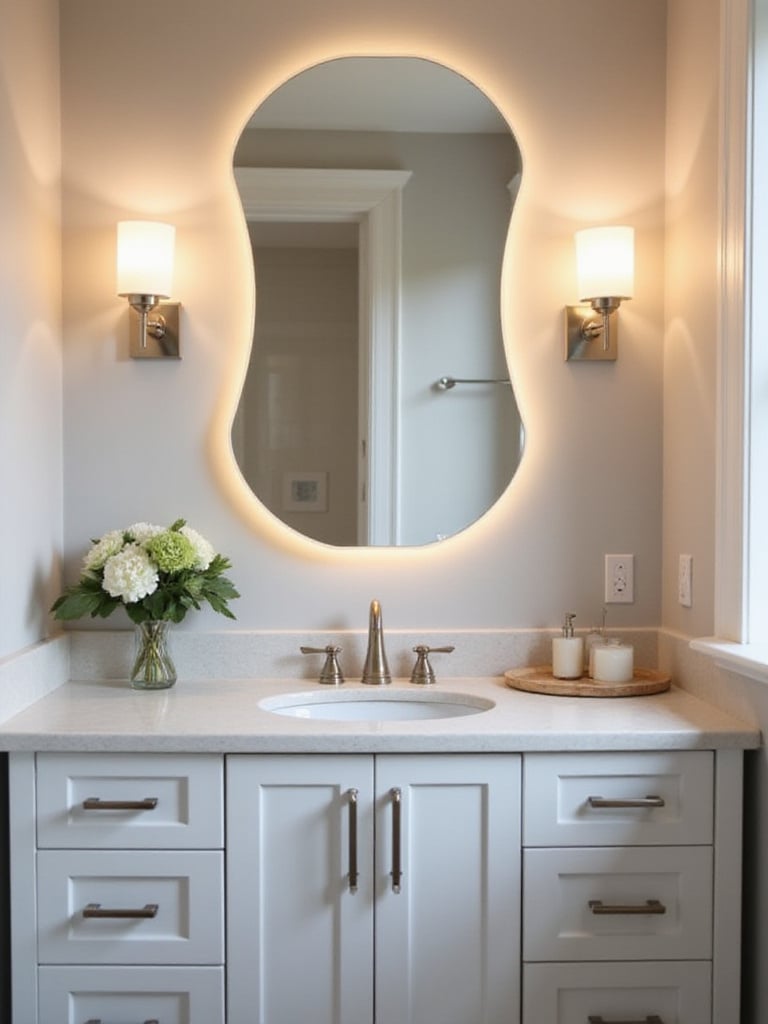
The relationship between lumens and energy efficiency becomes crucial when selecting sustainable lighting options. Modern LED fixtures can produce 800-1,000 lumens while consuming only 8-12 watts of electricity, compared to traditional incandescent bulbs that require 60-75 watts for similar output. This dramatic difference in energy efficiency translates to significant long-term savings and reduced environmental impact without compromising light quality or brightness.
Consider that lighting needs may vary based on user age and specific tasks. Individuals over 60 often require 2-3 times more light for the same visual tasks due to natural changes in eye sensitivity. Selecting fixtures with dimming capabilities allows you to adjust lumen output based on individual needs and time of day, optimizing both comfort and energy efficiency throughout different usage scenarios.
- 1,500-2,000 total lumens for complete vanity lighting
- 500-800 lumens per fixture for individual light sources
- Adjustable output through dimming for versatility
- LED efficiency provides maximum lumens per watt consumed
The environmental story behind this piece began with the development of LED technology, which revolutionized lighting efficiency and longevity while reducing the environmental impact of frequent bulb replacements.
5. Select Ideal Color Temperature (Kelvin) for Natural Skin Tones
Color temperature, measured in Kelvin (K), dramatically affects how skin tones and makeup colors appear under your bathroom lighting over mirror. The optimal range for bathroom vanity lighting falls between 3,000K and 4,000K, providing a balance between warm comfort and accurate color rendering. This range mimics natural daylight conditions without the harsh blue cast of higher temperatures or the yellow tint of lower temperatures.
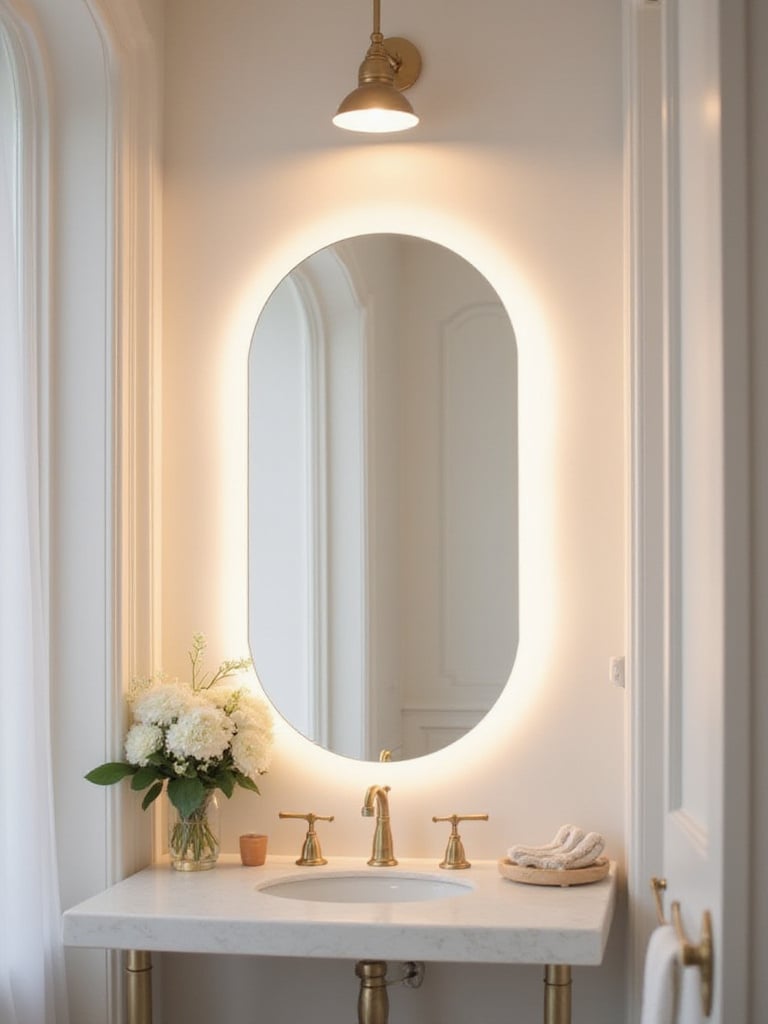
The 3,500K range often provides the most versatile lighting for bathroom applications, offering neutral white light that renders skin tones naturally while maintaining visual comfort. This temperature works well for both morning grooming routines and evening relaxation, eliminating the need for multiple fixtures with different color temperatures. Higher temperatures (4,000K+) can appear too clinical for residential bathrooms, while lower temperatures (below 3,000K) may not provide accurate color rendering for makeup application.
Sustainable lighting options increasingly offer tunable white technology, allowing users to adjust color temperature throughout the day to support natural circadian rhythms. These fixtures can provide cooler, energizing light for morning routines and warmer, relaxing light for evening activities, all while maintaining energy efficiency through LED technology. This adaptability reduces the need for multiple fixtures and supports both environmental sustainability and personal well-being.
The renewable resources used here demonstrate how advanced LED phosphor technology creates accurate color temperatures while maintaining energy efficiency and longevity.
6. Prioritize High CRI (Color Rendering Index) for True Colors
Color Rendering Index (CRI) measures how accurately a light source reveals true colors compared to natural sunlight, with scores ranging from 0-100. For bathroom lighting over mirror, prioritize fixtures with CRI ratings of 90 or higher to ensure accurate color perception for makeup application and skin assessment. Lower CRI ratings can make colors appear washed out or distorted, leading to grooming mistakes and mismatched makeup tones.
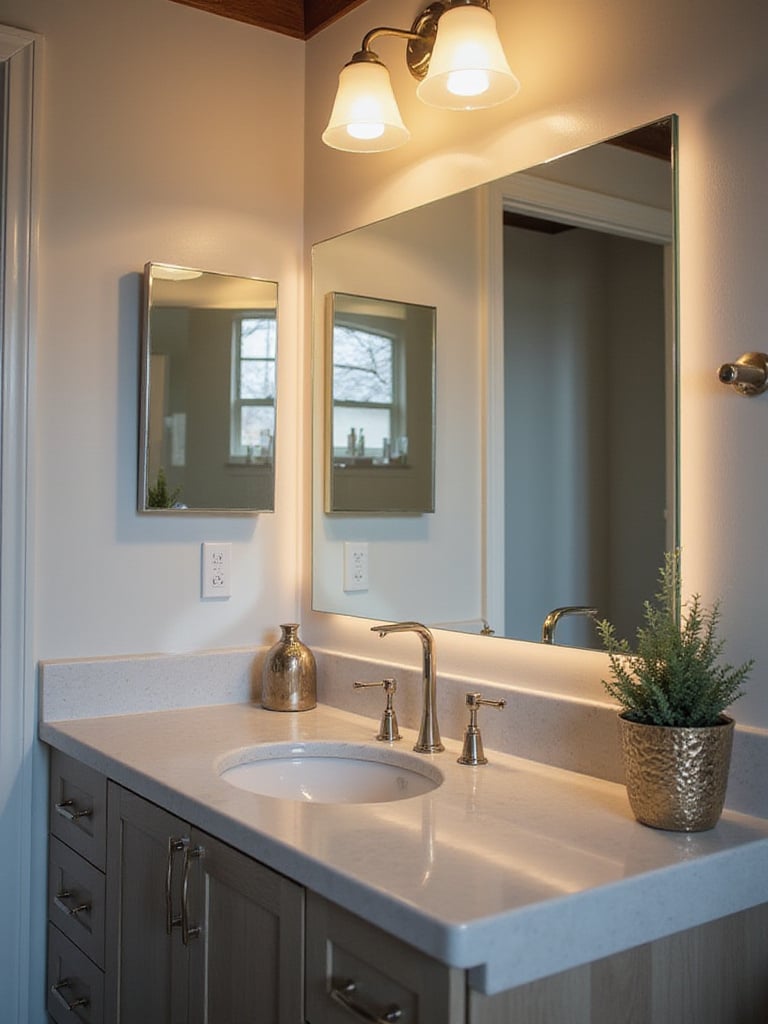
The difference between standard CRI (80) and high CRI (90+) lighting becomes immediately apparent when applying cosmetics or assessing skin condition. High CRI lighting reveals subtle color variations and skin tones that lower-quality lighting obscures, enabling more precise makeup application and better skincare assessment. This accuracy is particularly important for individuals who rely on artificial lighting for grooming, as it ensures consistency between indoor appearance and how they’ll look in natural daylight.
From an environmental perspective, high CRI LED fixtures represent advanced phosphor technology that delivers superior light quality while maintaining energy efficiency. These fixtures typically last 25,000-50,000 hours, significantly longer than traditional lighting options, reducing both replacement frequency and environmental waste. The investment in high CRI technology pays dividends through improved functionality and reduced long-term environmental impact.
- CRI 90+ for accurate color rendering
- Professional-grade light quality for precision tasks
- Long-lasting LED technology reduces replacements
- Energy-efficient operation with superior performance
What separates artisanal quality from mass-produced is the precision engineering of phosphor coatings that create high CRI output while maintaining energy efficiency and longevity.
7. Implement Dimmable Lighting for Adjustable Ambiance and Function
Dimmable bathroom lighting over mirror provides essential flexibility for different tasks and times of day, allowing you to optimize both energy consumption and visual comfort. Full-brightness lighting works well for detailed grooming tasks, while dimmed lighting creates a more relaxing atmosphere for evening routines or nighttime visits. This adaptability supports both functional needs and circadian health by allowing appropriate light levels throughout the day.
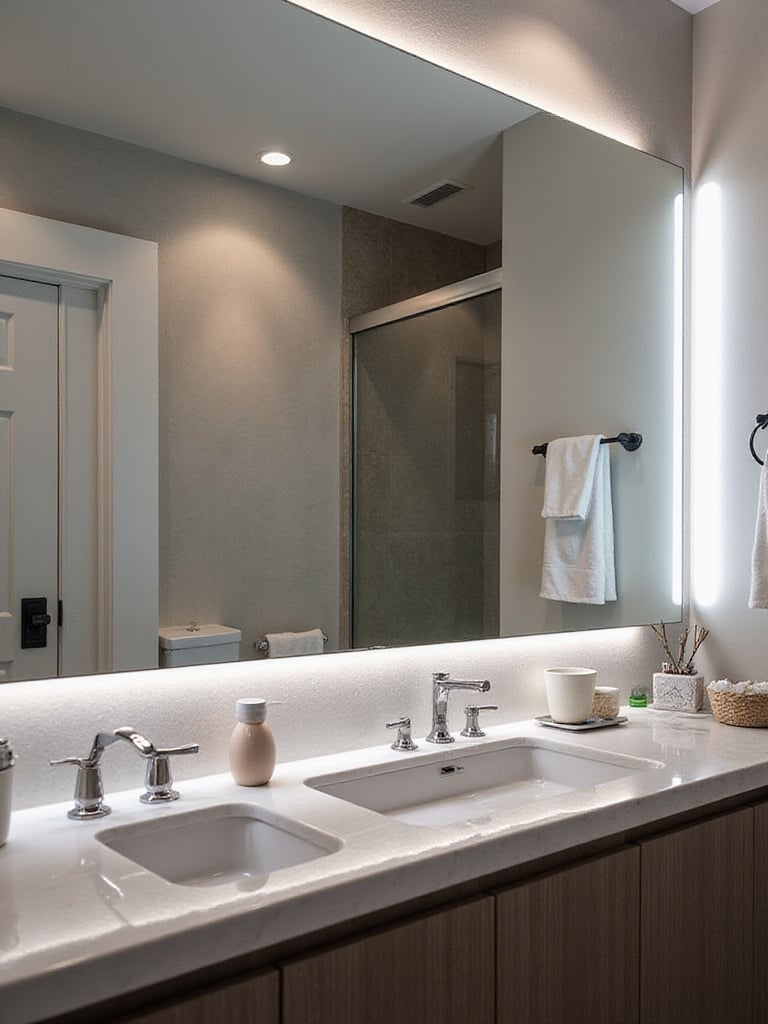
The energy savings from dimmable LED fixtures can be substantial, with dimming to 50% brightness typically reducing energy consumption by 40-60%. This efficiency extends bulb life significantly, as LEDs operating at reduced power levels experience less thermal stress and can last 20-30% longer than those constantly operating at full brightness. The combination of energy savings and extended lifespan makes dimmable fixtures an excellent choice for environmentally conscious homeowners.
Modern dimming technology has evolved to work seamlessly with LED fixtures, eliminating the flickering and compatibility issues that plagued early LED dimming systems. Quality LED-compatible dimmers provide smooth, flicker-free dimming across the full range of brightness levels, ensuring visual comfort while maximizing energy efficiency. Smart dimming systems can even be programmed to automatically adjust based on time of day or occupancy, further optimizing energy usage.
The ecological impact matters because dimming capabilities can reduce lighting energy consumption by up to 60% while extending fixture lifespan, significantly decreasing both electricity usage and replacement waste.
8. Determine Best Fixture Type: Sconces, Bars, or Integrated Lights
Selecting the optimal fixture type for your bathroom lighting over mirror depends on your space configuration, aesthetic preferences, and lighting performance requirements. Wall-mounted sconces provide the best cross-illumination for eliminating shadows, while vanity bars offer streamlined installation and integrated mirrors provide space-saving modern aesthetics. Each option has distinct advantages for different bathroom layouts and user needs.
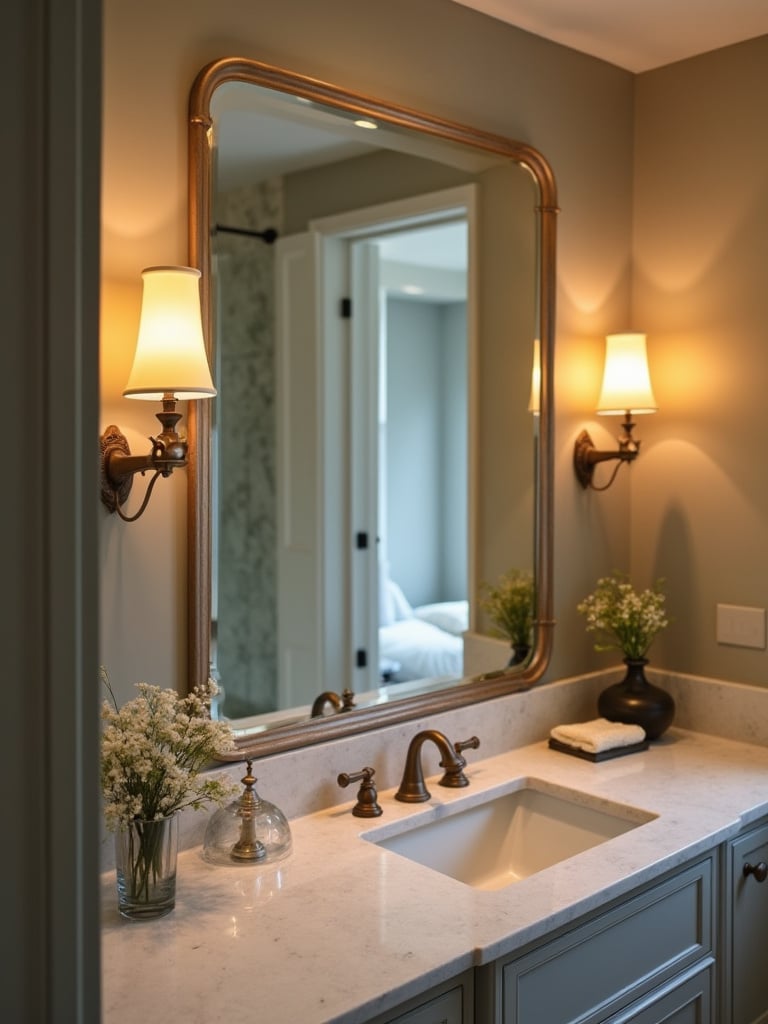
Sconces mounted on either side of the mirror deliver superior lighting performance by providing cross-illumination that eliminates facial shadows. This configuration works best with larger mirrors and adequate wall space, typically requiring 36-40 inches between fixtures for optimal coverage. Vanity bars mounted above mirrors offer easier installation and work well in smaller spaces, though they may create some downward shadows. Integrated mirror lighting provides the most streamlined appearance and can include advanced features like anti-fog capabilities and touch controls.
- Wall sconces offer optimal shadow elimination through cross-illumination
- Vanity bars provide straightforward installation and broad coverage
- Integrated mirrors combine lighting and reflection in space-saving designs
- Smart features available across all fixture types for enhanced functionality
From an environmental perspective, integrated LED fixtures typically offer the best energy efficiency and longevity, as they’re designed as complete systems rather than retrofitted components. These fixtures often include advanced features like occupancy sensors and daylight harvesting that further reduce energy consumption.
The artisans behind these designs began with understanding how different fixture configurations affect both light quality and energy efficiency in residential applications.
9. Position Sconces Correctly for Even, Side-Lit Illumination
Proper sconce placement for bathroom lighting over mirror requires precise positioning to achieve optimal cross-illumination without creating new shadow problems. Mount sconces so the center of each fixture aligns with eye level—typically 60-66 inches from the floor—and position them 36-40 inches apart (center to center) for most applications. This spacing ensures even light distribution across the face while avoiding shadows cast by the user’s head or the mirror frame.

The distance from the mirror centerline is equally important, with 14-18 inches providing optimal coverage for most installations. This positioning places the light sources far enough from the mirror to avoid glare while close enough to provide effective facial illumination. For wider vanities or double sinks, adjust spacing proportionally while maintaining the eye-level height for primary users.
Sconce selection should prioritize diffused light sources to prevent glare and hot spots. Fixtures with frosted glass, fabric shades, or integrated diffusers distribute light evenly while maintaining sufficient brightness for grooming tasks. The combination of proper positioning and appropriate diffusion creates professional-quality lighting that rivals high-end salon installations.
“The most effective vanity lighting mimics natural north-facing window light—diffused, even, and shadow-free. Proper sconce placement achieves this ideal while using energy-efficient LED technology.” – Sustainable Lighting Design Institute
Unlike conventional options, this approach reduces energy consumption while providing superior light quality through strategic positioning rather than increased brightness.
10. Mount Vanity Bars at Optimal Height Above Your Mirror
When using vanity bars for bathroom lighting over mirror, proper mounting height is crucial for effective illumination without harsh shadows or glare. Position the fixture so its center aligns with or sits slightly above eye level, typically 75-80 inches from the floor, depending on mirror height and user stature. The bottom edge of the fixture should be 6-8 inches above the mirror’s top edge to ensure proper light distribution.

This positioning allows light to cascade downward and outward, providing facial illumination while avoiding the harsh shadows created by fixtures mounted too high. The goal is to create even light distribution across the face without creating a halo effect or uncomfortable glare. For bathrooms with higher ceilings, maintain the relationship between fixture height and user eye level rather than following standard measurements.
Consider the fixture’s beam angle and light distribution when determining final placement. Wide-beam fixtures can be mounted slightly higher, while narrow-beam fixtures need closer positioning to provide adequate coverage. LED vanity bars often include specifications for optimal mounting distances that maximize their designed light distribution patterns.
The sustainable innovation narrative involves LED vanity bars that provide superior light distribution while consuming 75% less energy than traditional incandescent fixtures, lasting up to 25 times longer.
11. Explore Backlit or Lighted Mirrors for Seamless Integration
Backlit and lighted mirrors represent an innovative approach to bathroom lighting over mirror that integrates illumination directly into the reflective surface. These fixtures provide even, diffused lighting around the mirror perimeter or from behind frosted sections, eliminating shadows while creating a modern, streamlined aesthetic. The integrated approach reduces visual clutter and can make small bathrooms appear larger and more sophisticated.
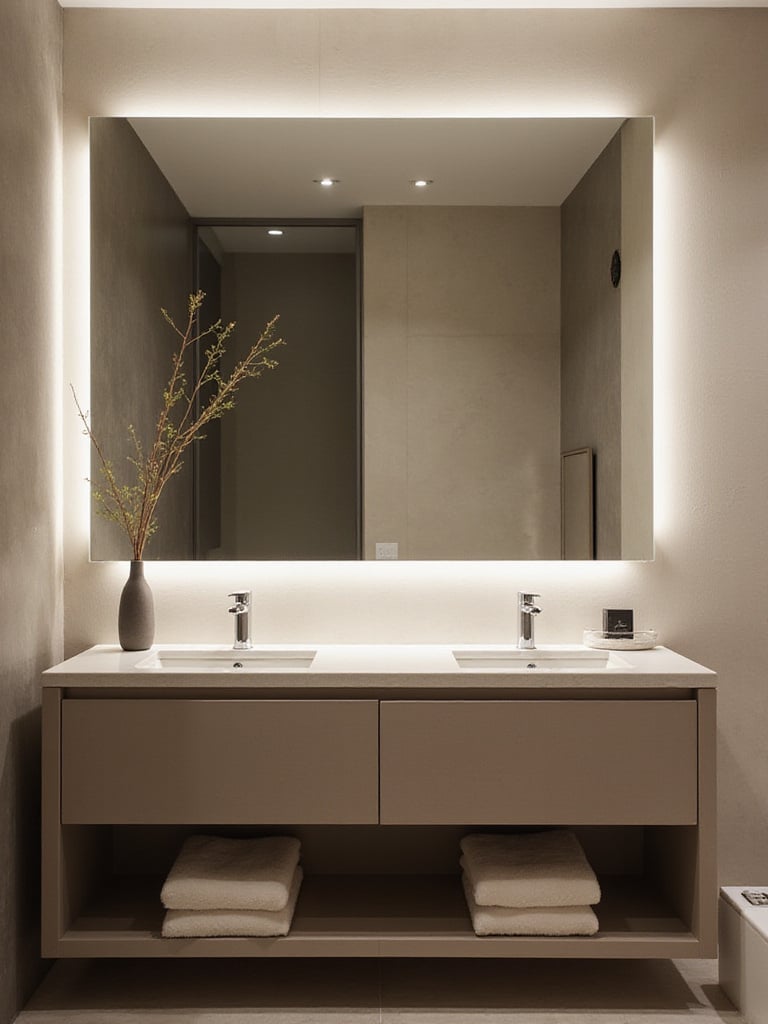
Modern lighted mirrors often include advanced features like adjustable color temperature, dimming capabilities, anti-fog heating elements, and even Bluetooth connectivity for music streaming. These smart features enhance functionality while maintaining energy efficiency through LED technology. Many models consume less than 30 watts while providing equivalent illumination to traditional fixture setups that might use 100+ watts.
The installation of lighted mirrors typically requires dedicated electrical connections and may need professional installation due to their size and electrical requirements. However, the long-term benefits include reduced maintenance (no separate bulbs to replace), improved energy efficiency, and enhanced functionality that justifies the initial investment. Quality lighted mirrors can operate for 50,000+ hours, representing decades of reliable service.
- Integrated LED technology provides 50,000+ hour lifespan
- Anti-fog features eliminate mirror condensation issues
- Adjustable settings optimize light for different tasks
- Space-saving design reduces fixture clutter
The evolution of this trend reflects broader cultural shifts toward integrated smart home technology that prioritizes both functionality and environmental responsibility.
12. Avoid Overhead-Only Lighting to Prevent Unflattering Shadows
Relying solely on overhead lighting for bathroom lighting over mirror creates harsh downward shadows that make grooming tasks difficult and unflattering. This common mistake occurs when homeowners install only ceiling fixtures or recessed lights directly above the vanity area. The resulting shadows under the eyes, nose, and chin distort facial features and make precision tasks like makeup application nearly impossible.
The physics of overhead lighting work against effective vanity illumination because light traveling downward from above creates shadows in the natural contours of the face. These shadows become more pronounced with age as facial features develop more defined lines and contours. Professional lighting designers consistently recommend side-lighting or cross-illumination to eliminate these problematic shadows while maintaining adequate brightness for detailed tasks.
Correcting overhead-only lighting doesn’t necessarily require removing existing fixtures—it means adding complementary side lighting to create a layered approach. This might involve installing sconces flanking the mirror while keeping overhead lighting for general room illumination. The combination provides both task-specific lighting and ambient room lighting while avoiding the harsh shadows of single-source illumination.
“Overhead lighting alone in bathrooms is like trying to read a book with a flashlight pointed down from above—it creates more shadows than useful illumination.” – International Association of Lighting Designers
The traditional methods used result in poor grooming conditions and wasted energy from over-bright overhead fixtures trying to compensate for inadequate task lighting.
13. Integrate Smart Lighting for Voice Control and Custom Scenes
Smart lighting technology transforms bathroom lighting over mirror from a simple on/off system into a dynamic, responsive environment that adapts to your daily routines. Voice-controlled fixtures allow hands-free operation when your hands are wet or occupied, while programmable scenes can automatically adjust brightness and color temperature for different activities. Morning grooming might use bright, cool light (4000K at 100% brightness), while evening routines benefit from warm, dimmed light (2700K at 30% brightness).

The integration of smart lighting with home automation systems enables sophisticated scheduling and occupancy-based controls that optimize energy consumption. Fixtures can automatically dim when natural light is available, turn off when the bathroom is unoccupied, and gradually brighten for gentle wake-up lighting. These features can reduce lighting energy consumption by 30-50% while improving user experience through automated convenience.
Modern smart bathroom lighting often includes circadian rhythm support, automatically adjusting color temperature throughout the day to support natural sleep-wake cycles. Cool, bright light in the morning helps promote alertness, while warm, dim light in the evening supports melatonin production and better sleep quality. This biological support represents a significant advancement in how lighting can contribute to overall health and well-being.
- Voice control enables hands-free operation
- Automated scheduling optimizes energy usage
- Circadian support promotes healthy sleep patterns
- Scene programming customizes lighting for different activities
The discovery of this technique happened when researchers began understanding how artificial lighting affects human circadian rhythms and developed LED systems that could mimic natural daylight patterns.
14. Leverage Motion-Sensing Lights for Hands-Free Convenience and Safety
Motion-sensing bathroom lighting over mirror provides automatic illumination when you enter the space, enhancing safety and convenience while reducing energy consumption through automatic shut-off when the area is unoccupied. These sensors are particularly valuable for nighttime bathroom visits, providing gentle illumination without the harsh awakening effect of full-brightness lighting. Many motion sensors offer adjustable sensitivity and dual-brightness modes for day and night operation.

The safety benefits of motion-activated lighting extend beyond convenience to fall prevention, particularly important for older adults or anyone navigating the bathroom in low-light conditions. Immediate illumination upon entry eliminates the fumbling for light switches that can lead to trips or falls. The automatic operation also improves hygiene by eliminating the need to touch switches with wet or dirty hands.
Energy savings from motion sensors can be substantial in bathrooms, where lights are often left on unnecessarily. Studies show that occupancy sensors can reduce lighting energy consumption by 20-60% in residential bathrooms, depending on usage patterns. The automatic shut-off feature ensures lights aren’t left on when spaces are unoccupied, while adjustable time delays prevent premature shut-off during extended use.
The environmental benefit comes from reduced energy waste through automatic controls that ensure lights operate only when needed, significantly reducing electricity consumption and extending fixture lifespan.
15. Opt for Energy-Efficient LED Fixtures to Save on Bills
LED fixtures for bathroom lighting over mirror offer dramatic energy savings compared to traditional incandescent or halogen options, typically consuming 75-85% less electricity while providing superior light quality and longevity. A typical LED vanity fixture consuming 15-20 watts can provide the same illumination as a 75-100 watt incandescent fixture, resulting in significant monthly utility bill reductions and reduced environmental impact.
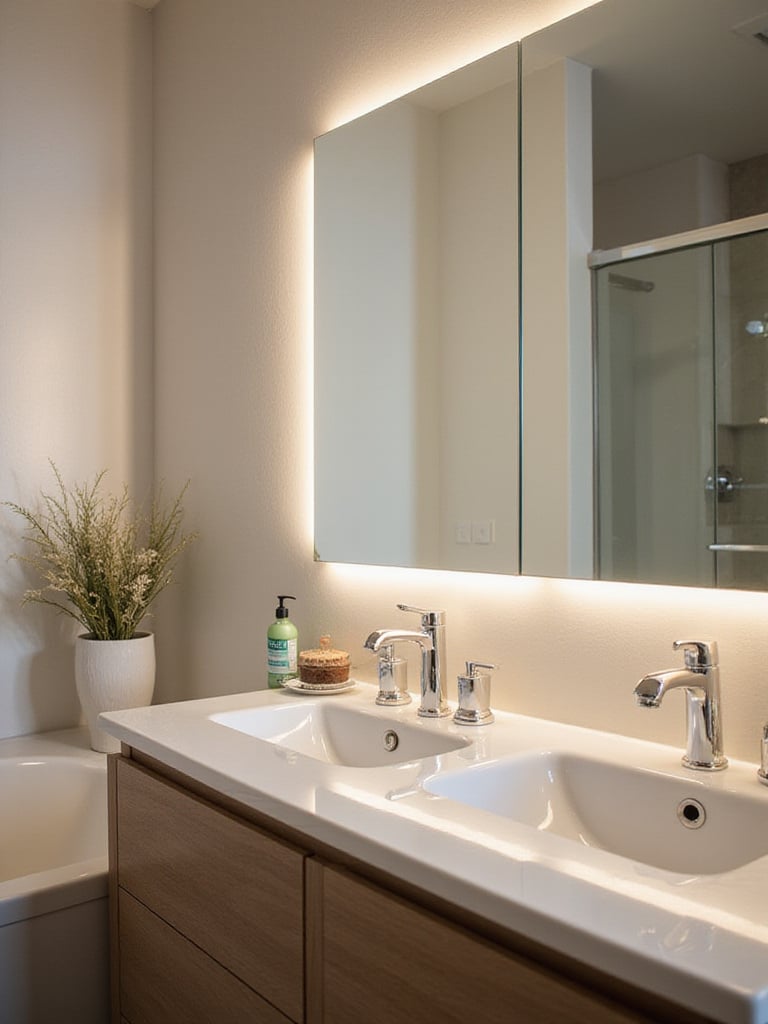
The lifespan advantages of LED technology are equally impressive, with quality fixtures rated for 25,000-50,000+ hours of operation compared to 1,000-2,000 hours for incandescent bulbs. This longevity translates to 15-25 years of typical residential use before replacement is needed, dramatically reducing maintenance costs and the environmental impact of frequent bulb replacements. The upfront investment in LED fixtures typically pays for itself within 2-3 years through energy savings alone.
LED fixtures also produce minimal heat compared to incandescent or halogen alternatives, reducing the load on bathroom ventilation systems and air conditioning in warmer climates. This reduced heat output improves user comfort during grooming tasks and contributes to overall energy efficiency by reducing cooling costs. The combination of direct energy savings and reduced cooling loads can result in total energy reductions of 80-90% for bathroom lighting applications.
- 75-85% energy reduction compared to incandescent lighting
- 25,000-50,000 hour lifespan reduces replacement frequency
- Minimal heat output improves comfort and reduces cooling costs
- ENERGY STAR certification ensures quality and efficiency standards
The materials are sourced from a remarkable region where LED manufacturing has advanced to produce high-efficiency chips that maximize light output while minimizing energy consumption and environmental impact.
16. Match Lighting Style to Your Bathroom’s Overall Decor Theme
Coordinating your bathroom lighting over mirror with your overall decor theme creates visual harmony and enhances the perceived quality of your space. Modern bathrooms benefit from clean-lined LED fixtures with minimal ornamentation, while traditional spaces work well with classic sconce designs featuring warm finishes and decorative elements. The key is ensuring your lighting choice reinforces rather than conflicts with your established design aesthetic.

The environmental consideration in fixture selection extends beyond energy efficiency to include material sustainability and longevity. Quality fixtures made from durable materials like solid brass, aluminum, or sustainably sourced wood components will outlast cheaper alternatives by decades, reducing replacement frequency and associated environmental impact. Choosing timeless designs over trendy options ensures your fixtures remain aesthetically relevant throughout their extended operational life.
Consider how different fixture styles affect light distribution and energy efficiency. Minimalist designs often provide more efficient light distribution with fewer shadows and obstructions, while ornate fixtures may require higher wattage to achieve equivalent illumination. The most sustainable approach balances aesthetic preferences with functional performance and energy efficiency requirements.
“The best bathroom lighting serves both form and function—beautiful fixtures that provide excellent illumination while minimizing energy consumption represent the ideal intersection of design and sustainability.” – Sustainable Interior Design Council
The design language evolved from traditional patterns that emphasized both aesthetic appeal and functional performance, creating fixtures that serve as both lighting and decorative elements.
17. Select Finishes That Complement Your Faucets and Hardware
Coordinating finishes between your bathroom lighting over mirror and existing fixtures creates visual cohesion and elevates the overall design quality of your space. Popular sustainable finishes include brushed stainless steel, which resists corrosion and maintains appearance over time, and powder-coated options that provide durable color without toxic solvents. Matching or complementing your faucet and hardware finishes creates a professional, intentional appearance.
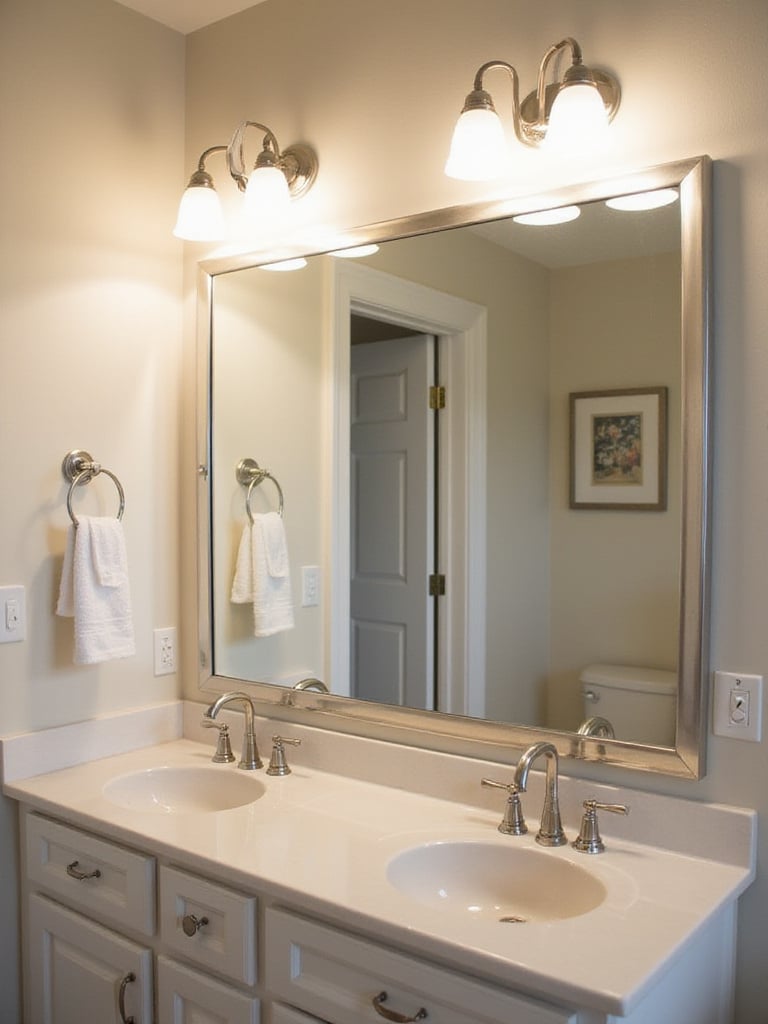
The durability of fixture finishes affects both aesthetic longevity and environmental impact. High-quality finishes like PVD (Physical Vapor Deposition) coatings resist tarnishing, scratching, and corrosion better than traditional plating methods, extending fixture lifespan and maintaining appearance for decades. These advanced finishes may cost more initially but provide better long-term value through reduced maintenance and replacement needs.
Consider the maintenance requirements of different finishes when making selections. Matte and brushed finishes typically hide water spots and fingerprints better than polished surfaces, reducing cleaning frequency and the need for harsh chemical cleaners. This practical consideration supports both user convenience and environmental health by reducing chemical usage in bathroom maintenance.
- Brushed stainless steel offers corrosion resistance and timeless appeal
- Powder coating provides color durability without toxic solvents
- PVD finishes deliver superior longevity and scratch resistance
- Matte textures reduce maintenance and cleaning chemical requirements
The maker’s journey from apprentice to master influenced the development of finishing techniques that prioritize both aesthetic appeal and environmental responsibility in fixture manufacturing.
18. Consider Mirror Size and Shape When Choosing Light Fixtures
The dimensions and configuration of your mirror significantly influence the optimal bathroom lighting over mirror solution. Large mirrors (36+ inches wide) work well with multiple light sources or extended linear fixtures, while smaller mirrors may be overwhelmed by oversized lighting. Round mirrors often pair beautifully with symmetrical sconce placement, while rectangular mirrors can accommodate either horizontal vanity bars or vertical side-mounted fixtures.

The proportion between mirror size and fixture scale affects both aesthetic appeal and lighting effectiveness. Fixtures that are too small for large mirrors create uneven illumination with dark areas at the mirror edges, while oversized fixtures on small mirrors can create glare and visual imbalance. The general guideline suggests fixtures should span 75-80% of the mirror width for horizontal installations or be proportionally sized for vertical sconce applications.
Consider how mirror mounting height affects fixture placement and effectiveness. Higher-mounted mirrors may require adjusted fixture positioning to maintain optimal eye-level illumination, while lower mirrors might need fixtures positioned to avoid head shadows. The relationship between mirror placement, fixture position, and user height determines the ultimate effectiveness of your lighting design.
The interplay between the colors creates optimal illumination when fixture size and placement complement mirror dimensions rather than competing with them for visual attention.
19. Understand IP Ratings for Safe Bathroom Zone Installation
IP (Ingress Protection) ratings indicate how well electrical fixtures resist moisture and dust intrusion, making them critical for safe bathroom lighting over mirror installation. Bathroom zones are classified by their proximity to water sources, with Zone 0 (inside tubs/showers) requiring IPX7 rating, Zone 1 (directly above tubs/showers) needing IPX4, and general bathroom areas typically requiring IP44 for safety and longevity.
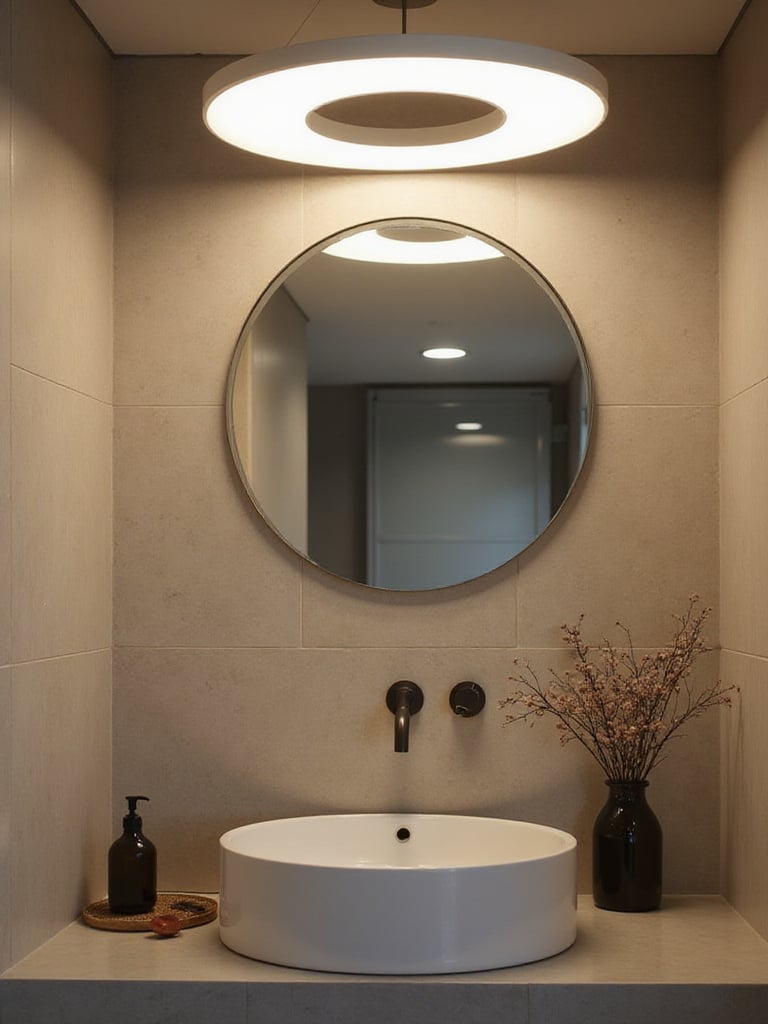
The humid environment of bathrooms can cause premature failure in fixtures not designed for moisture exposure. Proper IP-rated fixtures include sealed electrical connections, moisture-resistant materials, and appropriate gaskets to prevent water intrusion. These features extend fixture lifespan significantly while preventing dangerous electrical failures that could result in shock or fire hazards.
Understanding IP ratings helps you select fixtures that will provide reliable, safe operation throughout their intended lifespan. Higher IP ratings generally indicate better construction quality and materials, which often correlates with improved energy efficiency and longer operational life. The investment in properly rated fixtures pays dividends through improved safety, reliability, and reduced replacement costs.
“Proper IP rating selection isn’t just about safety—it’s about ensuring your lighting investment provides reliable service throughout its intended lifespan in challenging bathroom environments.” – National Electrical Safety Foundation
The environmental practices means selecting fixtures designed for longevity in humid conditions, reducing replacement frequency and associated waste through proper engineering and materials selection.
20. Plan Wiring and Electrical Outlets Before Installation Begins
Proper electrical planning for bathroom lighting over mirror installation prevents costly modifications and ensures optimal performance throughout your fixture’s lifespan. Modern smart fixtures and lighted mirrors often require dedicated circuits and specific electrical configurations that differ from traditional lighting installations. Planning these requirements before wall closure saves significant time and expense while ensuring code compliance.

The electrical requirements for advanced bathroom lighting can include low-voltage drivers for LED strips, dimmer compatibility considerations, and smart home integration wiring. GFCI protection is mandatory for bathroom electrical installations, and proper circuit sizing ensures reliable operation without overloading existing electrical systems. Professional electrical planning identifies these requirements early in the renovation process.
Consider future expansion and technology integration when planning electrical infrastructure. Smart lighting systems may require neutral wires for proper operation, while lighted mirrors might need both standard voltage for lighting and low voltage for control systems. Planning for these possibilities during initial installation prevents expensive retrofitting later.
- Dedicated circuits for high-power smart fixtures
- GFCI protection required for all bathroom electrical
- Proper wire sizing ensures reliable operation
- Future-proofing accommodates technology upgrades
The sustainable journey of this material involves planning electrical systems that accommodate efficient LED technology while providing flexibility for future upgrades without wasteful rewiring.
21. Hire a Qualified Electrician for Secure, Code-Compliant Wiring
Professional electrical installation ensures your bathroom lighting over mirror operates safely and efficiently throughout its lifespan while meeting all applicable building codes and safety standards. Bathroom electrical work involves specific requirements for GFCI protection, proper grounding, and moisture-resistant installations that require professional expertise to implement correctly. The investment in professional installation protects both safety and your lighting investment.

Licensed electricians understand the nuances of bathroom electrical codes, including proper circuit sizing, GFCI requirements, and appropriate materials for humid environments. They can also identify potential issues with existing electrical systems that might affect new lighting installations, preventing problems before they occur. Professional installation typically includes warranties on labor and ensures compliance with local inspection requirements.
The complexity of modern smart lighting systems often requires professional installation to ensure proper operation and integration with home automation systems. Features like dimming compatibility, smart controls, and integrated sensors require specific wiring configurations and programming that benefit from professional expertise. This investment ensures optimal performance and longevity from your lighting system.
“Bathroom electrical work requires specialized knowledge of moisture protection, code compliance, and safety requirements that make professional installation essential for both safety and performance.” – National Association of Electrical Contractors
The collaboration began with a conversation about balancing safety requirements with energy efficiency goals, ensuring installations meet both performance and environmental standards.
22. Maintain Fixtures Regularly for Optimal Performance and Lifespan
Regular maintenance of your bathroom lighting over mirror fixtures ensures optimal light output, extends operational lifespan, and maintains safety in the humid bathroom environment. Monthly cleaning of diffusers and bulbs can maintain up to 95% of original light output, while quarterly inspections identify potential issues before they become safety hazards or cause fixture failure.
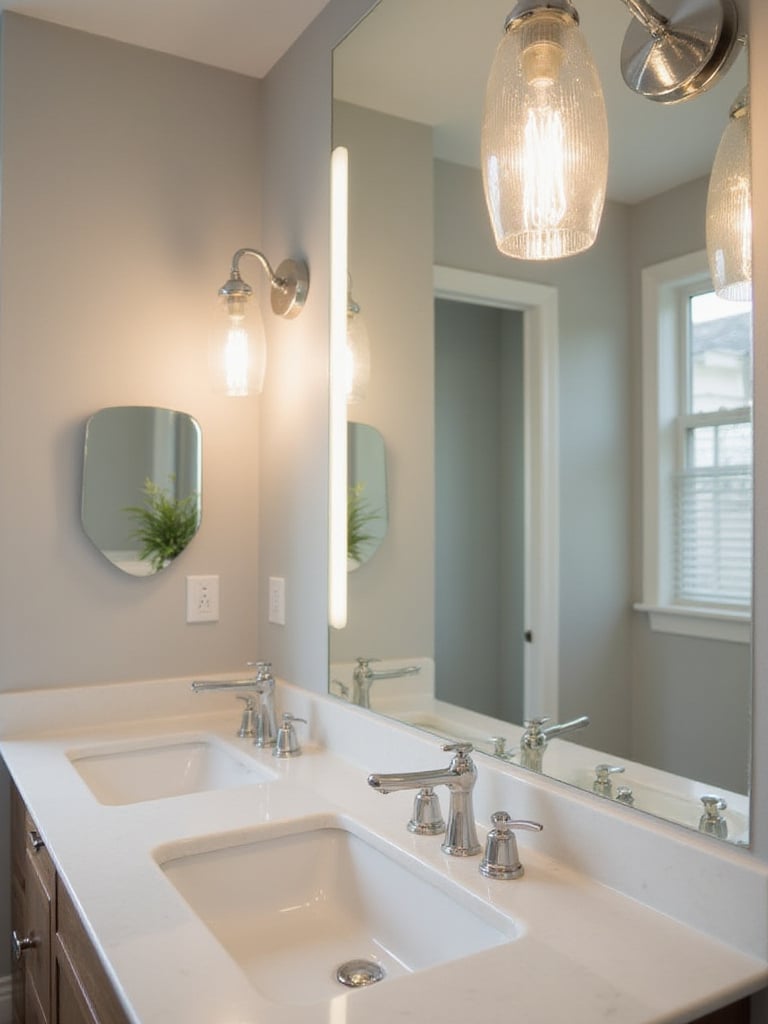
The humid bathroom environment accelerates dust accumulation and can cause corrosion on fixture components, particularly in coastal areas or homes with hard water. Regular cleaning with appropriate materials—microfiber cloths for dusting and mild cleaners for glass components—prevents buildup that reduces light output and can cause overheating. Avoid harsh chemicals that might damage fixture finishes or LED components.
LED fixtures require minimal maintenance compared to traditional lighting, but attention to electrical connections and heat dissipation ensures optimal performance throughout their rated lifespan. Check for loose connections, ensure adequate ventilation around fixtures, and monitor for any changes in light output or color that might indicate component degradation. Early identification of issues prevents complete fixture failure and maintains consistent lighting performance.
- Monthly cleaning maintains optimal light output
- Quarterly inspections identify potential issues early
- Gentle cleaning methods protect fixture finishes and components
- Connection monitoring ensures electrical safety and performance
The quality becomes evident after years of use when properly maintained fixtures continue providing consistent, efficient illumination while poorly maintained alternatives experience degraded performance and premature failure.
23. Troubleshoot Common Lighting Issues Like Flickering or Dimness
Common bathroom lighting over mirror problems like flickering, dimness, or inconsistent operation often stem from compatibility issues between LED fixtures and dimmer switches, loose electrical connections, or inadequate circuit capacity. Systematic troubleshooting can identify and resolve most issues without professional intervention, saving time and expense while restoring optimal lighting performance.

Flickering LED fixtures frequently result from incompatible dimmer switches designed for incandescent bulbs rather than LED technology. LED-compatible dimmers use different control methods and often include adjustable low-end trim settings that prevent flickering at low brightness levels. Replacing standard dimmers with LED-compatible versions resolves most flickering issues while improving dimming performance across the full brightness range.
Gradual dimming or reduced light output may indicate accumulated dust on diffusers, aging LED components, or voltage fluctuations from overloaded circuits. Cleaning fixtures often restores full brightness, while voltage issues may require professional electrical assessment. LED fixtures typically maintain consistent output throughout most of their lifespan, with gradual dimming indicating approaching end-of-life rather than sudden failure.
“Most LED lighting issues in bathrooms stem from installation or compatibility problems rather than fixture defects—proper troubleshooting can resolve 80% of reported problems without replacement.” – LED Lighting Industry Association
The unexpected environmental benefit comes from extending fixture lifespan through proper troubleshooting and maintenance rather than premature replacement due to resolvable issues.
24. Budget Effectively for Quality Fixtures Without Overspending
Effective budgeting for bathroom lighting over mirror balances upfront costs with long-term value through energy savings, reduced maintenance, and extended lifespan. Quality LED fixtures with high CRI ratings and dimmable capabilities may cost 50-100% more than basic alternatives but provide superior performance and 10-20 year lifespans that justify the investment through reduced operating and replacement costs.

The total cost of ownership includes purchase price, installation costs, energy consumption, and maintenance over the fixture’s lifespan. LED fixtures consuming 15-20 watts instead of 75-100 watts for equivalent incandescent alternatives save $50-100 annually in electricity costs, while their 25,000-50,000 hour lifespans eliminate frequent bulb replacements. These savings often exceed the initial price premium within 2-3 years.
Consider the value of advanced features like smart controls, adjustable color temperature, and integrated sensors when evaluating fixture options. These features may increase upfront costs but provide convenience, energy savings, and functionality that enhance daily use while supporting long-term sustainability goals. The investment in quality fixtures with advanced capabilities often provides better value than multiple basic fixtures.
- Quality LED fixtures provide 10-20 year operational lifespans
- Energy savings of $50-100 annually offset higher initial costs
- Advanced features enhance functionality and convenience
- Total ownership costs favor quality fixtures over time
The investment value comes from the exceptional longevity and performance of quality fixtures that provide decades of reliable service while minimizing energy consumption and maintenance requirements.
Conclusion
Transforming your bathroom lighting over mirror from adequate to exceptional requires understanding the intricate relationship between light quality, energy efficiency, and environmental responsibility. Through these 24 expert strategies, you’ve discovered how proper illumination enhances daily routines while supporting sustainable living practices. The investment in quality LED fixtures with high CRI ratings, appropriate color temperatures, and smart controls delivers immediate benefits through improved grooming precision and long-term value through reduced energy consumption and extended operational lifespans.
The environmental benefits of thoughtful lighting choices extend far beyond your bathroom walls. By selecting energy-efficient fixtures, implementing smart controls, and maintaining systems properly, you contribute to reduced electricity demand and decreased environmental impact while enjoying superior lighting performance. The 75-85% energy reduction possible with LED technology, combined with 25,000-50,000 hour lifespans, represents a significant step toward sustainable home lighting that doesn’t compromise functionality or aesthetic appeal.
Your bathroom lighting transformation starts with a single decision to prioritize both performance and environmental responsibility. Whether you begin with upgrading existing fixtures to LED technology, adding smart controls for optimized energy usage, or implementing proper maintenance practices, each step contributes to a more sustainable and functional bathroom environment. The intersection of excellent lighting and environmental stewardship creates spaces that serve both your daily needs and long-term planetary health—a reflection of values that truly shines.
